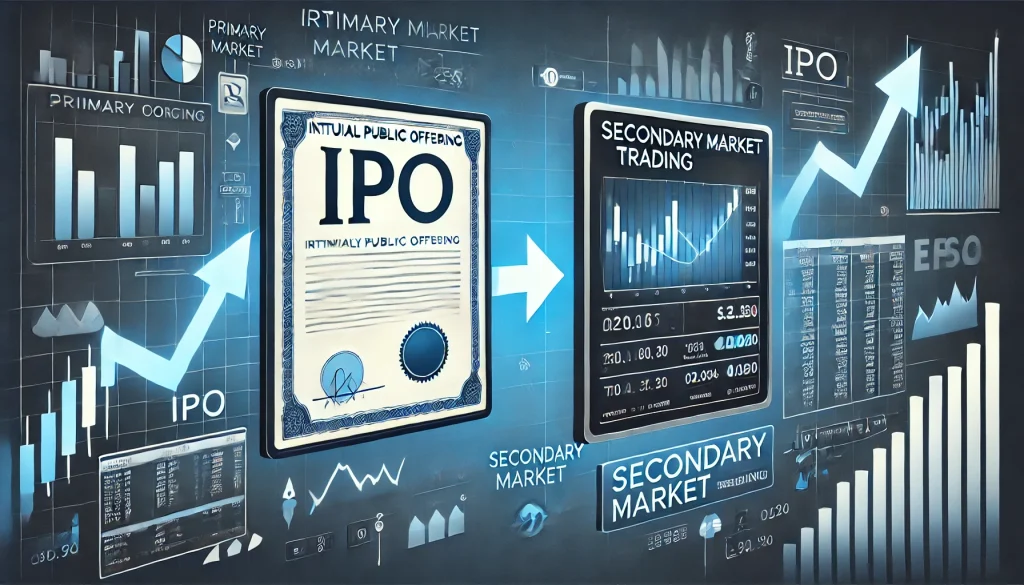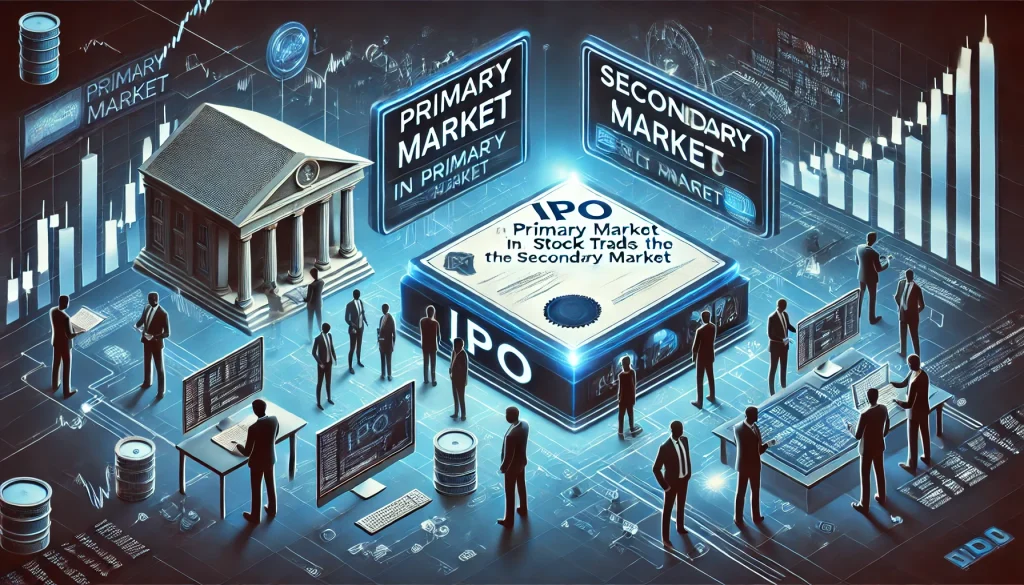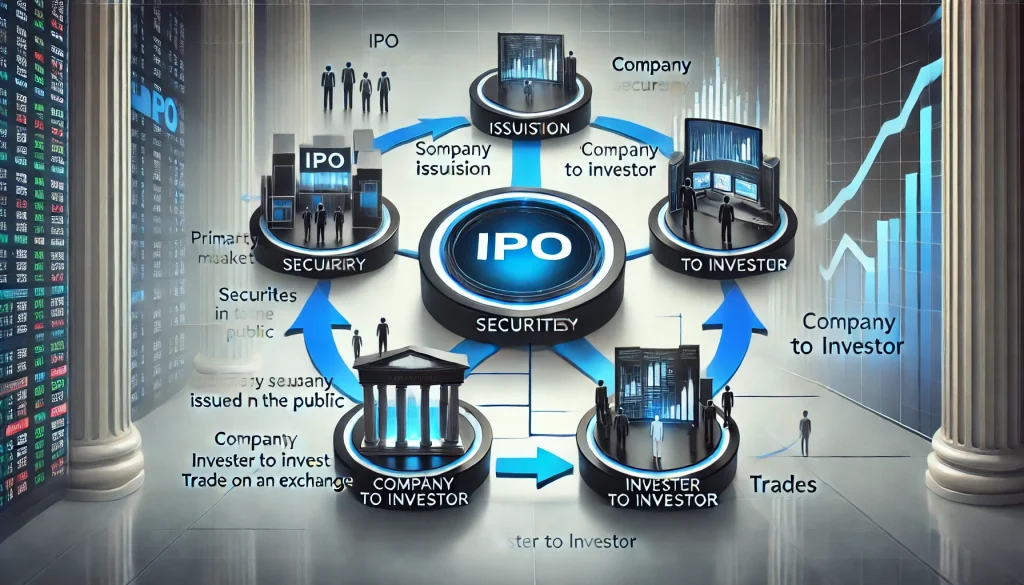
In October 2024, the dynamics of financial markets have continued to evolve, making it essential for investors to understand the distinction between the primary market and the secondary market. Whether you’re investing in stocks or bonds, or navigating mortgage-backed securities, these markets function differently, and your strategy should reflect their unique characteristics.
Both markets play a critical role in the financial ecosystem, but they serve different purposes and stakeholders. In this blog, we will explore how these markets operate, why their roles have shifted in 2024, and what that means for investors. Let’s dive into the details.
Overview
The terms primary market and secondary market are common in finance, but often misunderstood. As of October 2024, these markets remain essential to trading securities, stocks, bonds, and mortgages, with technology and regulation introducing new complexities.
Understanding how these markets work is crucial for investors, as each affects pricing, risk, and liquidity differently. The primary market handles the initial issuance of securities, while the secondary market facilitates their trading after issuance.Knowing the difference between these two markets helps investors choose the best strategy to meet their financial goals.
Primary Market vs Secondary Market: Understanding the Fundamentals

The Primary Market: Direct Access to New Securities
The primary market is where new securities are created and sold directly to investors. Companies, governments, or other entities issue these securities to raise capital for expansion, debt repayment, or operational expenses. In this market, investors have the first opportunity to purchase assets, and prices are typically fixed by the issuer.
Key Features of the Primary Market:
- Direct Issuance: Companies issue stocks or bonds for the first time through Initial Public Offerings (IPOs) or bond issues.
- Pricing: The issuer determines the price, and no trading occurs after the issuance in the primary phase.
- Participants: Buyers are usually institutional investors such as pension funds, mutual funds, or large-scale retail investors.
A key example of primary market activity is IPOs, where companies sell shares to the public for the first time. Another major aspect is the issuance of new mortgage-backed securities (MBS), which plays a crucial role in today’s volatile mortgage market.
The Secondary Market: Continuous Trading and Liquidity
After issuance in the primary market, securities move to the secondary market, where investors actively trade them. This is the familiar space where stocks, bonds, and other instruments are bought and sold. The secondary market ensures liquidity, allowing investors to quickly convert assets into cash with minimal value loss.
Key Features of the Secondary Market:
- Price Discovery: Prices fluctuate based on demand and supply, reflecting market sentiment and performance metrics.
- Liquidity: Offers the ability to buy and sell previously issued securities, enhancing the overall fluidity of financial markets.
- Varied Participants: From individual retail investors to large institutional entities, participants trade frequently, driving market dynamics.
The secondary market comprises well-known exchanges like the New York Stock Exchange (NYSE) and the Nasdaq. Here, investors can purchase stocks that have already been issued by companies, and bonds that are actively traded by large financial institutions. Additionally, mortgage-backed securities continue to change hands in this market, responding to shifts in interest rates and housing demand.
What to Watch in 2024: Changes Impacting Both Markets

As of October 2024, several new trends and regulatory changes are influencing both the primary and secondary markets, reshaping how investors approach these sectors. These changes include:
Increased Digitization
Digital platforms have made it easier for companies to issue securities directly to investors without traditional intermediaries. This trend is more prominent in the primary market, where blockchain platforms have streamlined the issuance of securities through tokenized asset offerings.
Enhanced Transparency
Regulatory bodies have pushed for greater transparency in both markets. In the secondary market, this means tighter scrutiny on trades and clearer reporting requirements. Investors can now access real-time data, which helps in making informed decisions, especially regarding stock and mortgage-backed security trading.
Sustainable Investment Surge
The growing focus on environmental, social, and governance (ESG) factors is also affecting both markets. Many IPOs in 2024 have centered on sustainable ventures, and ESG-rated bonds are becoming common in both the primary and secondary markets. Investors are looking for opportunities that align with sustainability goals, further differentiating asset classes across markets.
Impact on Investors: Primary vs Secondary Market
Understanding the core differences between the primary and secondary markets can help investors tailor their strategies effectively. Here’s how each market impacts different investment areas:
Pricing Strategies
- In the primary market, pricing is predetermined by the issuer and typically does not fluctuate. For example, when buying shares in an IPO, investors pay the set price, with the expectation that the price may increase once the stock enters the secondary market.
- The secondary market, however, offers flexibility in pricing, where stock prices change due to market conditions and investor demand. This presents opportunities for profit but also poses risks if the market becomes volatile.
Risk Considerations
- Buying securities in the primary market can carry higher risk, especially with IPOs, as there is limited trading history to analyze. Investors need to rely on financial disclosures and prospectuses.
- In contrast, the secondary market provides more data and historical performance information, reducing some of the uncertainty. However, short-term volatility can still lead to significant gains or losses.
Liquidity and Exit Strategies
- The primary market may have liquidity constraints since securities are not freely traded. Investors in bonds or MBS typically need to hold these until maturity or sell them on the secondary market.
- The secondary market offers greater liquidity, allowing investors to exit positions easily, which is particularly beneficial for those seeking more dynamic, shorter-term trading strategies.
Conclusion
Both the primary market and the secondary market are essential pillars of the financial system, each serving distinct roles. In the primary market, companies and governments raise capital by issuing securities for the first time, offering investors a direct avenue to participate in these offerings. In the secondary market, investors trade these securities among themselves, ensuring liquidity and flexibility.
As of October 2024, digital asset issuance, stricter regulations, and ESG-focused investments are reshaping market dynamics. Understanding each market’s mechanics helps investors make informed decisions aligned with their risk tolerance and goals.
Staying updated on market differences enables you to refine strategies, seize opportunities, and manage risks. Whether participating in an IPO or trading stocks, knowing how to navigate each market equips you for better financial decisions.
Key Takeaways
- Primary markets are where new securities are issued, offering investors a first opportunity to buy assets directly from the issuer.
- Secondary markets are where securities are traded between investors, providing liquidity and enabling price discovery based on market dynamics.
- In October 2024, technological advancements, regulatory shifts, and the rise of ESG investing are reshaping how these markets function.
Resources
- Bajaj Finserv. Primary and Secondary Market.
- Investopedia. Primary and Secondary Markets.
- Britannica. Primary vs Secondary Markets.
- ETF Stream. Understanding Primary and Secondary Markets.
- EQVISTA. Primary vs Secondary Markets.
